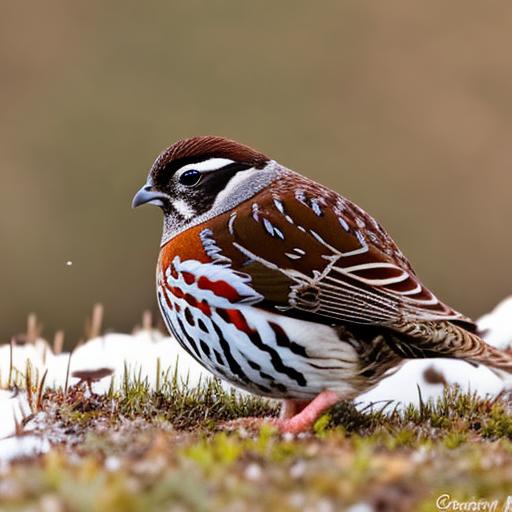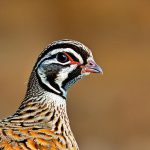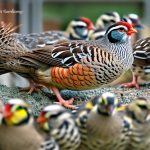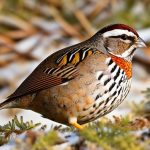Quail, like many other birds, have specific needs during the winter months. Understanding these needs is crucial for ensuring their survival and well-being. In the winter, quail require shelter from harsh weather conditions, access to food and water, and protection from predators. Additionally, they need to conserve energy to stay warm and maintain their health. It’s important to recognize that quail are ground-dwelling birds and do not migrate, so they rely on the resources available in their immediate environment to survive the winter. By understanding the needs of quail in winter, we can take the necessary steps to provide them with the support they need to thrive during this challenging season.
Quail have a high metabolism and need to consume a significant amount of food to maintain their energy levels during the winter. They primarily feed on seeds, grains, and insects, so it’s important to ensure that they have access to these food sources. Additionally, quail need to stay warm and dry to avoid hypothermia and other cold-related health issues. Providing them with adequate shelter and protection from the elements is essential for their survival. By understanding the specific needs of quail in winter, we can create a supportive environment that allows them to thrive despite the challenges of the season.
Key Takeaways
- Quail need protection from harsh weather conditions and predators during winter
- Providing natural or man-made shelters can help quail stay warm and safe
- Offering high-energy foods like seeds, grains, and insects can help quail maintain their health during winter
- Ensuring access to unfrozen water sources is crucial for quail survival in winter
- Implementing predator control measures such as fencing and habitat management can help protect quail during winter
Providing adequate shelter for quail in winter
During the winter months, quail require shelter that protects them from harsh weather conditions such as cold temperatures, strong winds, and precipitation. Providing adequate shelter for quail is essential for their survival and well-being. There are several options for providing shelter for quail in winter, including natural cover such as dense shrubs and brush piles, as well as man-made structures such as brush shelters and roosting boxes. Natural cover provides quail with protection from the elements and predators, while man-made structures can offer additional support during extreme weather conditions.
Dense shrubs and brush piles provide quail with natural cover that helps them stay warm and dry during the winter. These areas also offer protection from predators, allowing quail to feel safe and secure. Man-made structures such as brush shelters and roosting boxes can be placed strategically throughout the quail habitat to provide additional shelter and protection. These structures should be placed in areas with ample food and water sources to ensure that quail have everything they need to survive the winter months. By providing adequate shelter for quail in winter, we can help them stay warm, dry, and safe, ultimately supporting their overall health and well-being.
Ensuring proper nutrition for quail during the winter months
Proper nutrition is essential for quail to survive and thrive during the winter months. Quail have high energy requirements and need access to a variety of food sources to maintain their health and well-being. During the winter, natural food sources may become scarce, so it’s important to provide supplemental nutrition to ensure that quail have access to the nutrients they need. This can include offering a mix of seeds, grains, and insects, as well as providing access to feeders that are stocked with high-quality bird feed.
In addition to providing supplemental nutrition, it’s important to ensure that quail have access to clean water throughout the winter. Water is essential for digestion and overall health, so it’s crucial to keep water sources from freezing. This can be achieved by using heated waterers or regularly checking and replacing frozen water sources. By ensuring proper nutrition for quail during the winter months, we can support their overall health and well-being, ultimately helping them thrive despite the challenges of the season.
Managing water sources for quail in winter
Water is essential for quail to survive during the winter months. It’s crucial to ensure that quail have access to clean water at all times, as dehydration can lead to serious health issues. In cold weather, water sources can freeze, making it difficult for quail to access the water they need. To manage water sources for quail in winter, it’s important to use heated waterers or regularly check and replace frozen water sources. Additionally, providing shallow dishes or birdbaths with fresh water can help ensure that quail have access to clean water throughout the winter.
Another option for managing water sources for quail in winter is to create a small pond or water feature that is designed specifically for wildlife. These features can be equipped with heaters or aerators to prevent freezing and provide a consistent source of water for quail and other wildlife. By managing water sources for quail in winter, we can ensure that they have access to the essential hydration they need to survive and thrive during the cold months.
Protecting quail from predators in winter
Predators pose a significant threat to quail during the winter months, as they are more vulnerable due to the harsh weather conditions and limited food sources. It’s important to take steps to protect quail from predators in order to ensure their survival and well-being. One effective way to protect quail from predators is by providing adequate shelter and cover. Dense shrubs, brush piles, and man-made structures such as roosting boxes can offer protection from predators by providing hiding spots and safe areas for quail to seek refuge.
Another way to protect quail from predators in winter is by implementing predator control measures such as fencing or netting around their habitat. This can help deter predators from accessing areas where quail are present. Additionally, using motion-activated lights or sound devices can help scare off potential predators and keep quail safe. By taking proactive measures to protect quail from predators in winter, we can help ensure their safety and well-being during this challenging season.
Monitoring the health of quail during the winter

Monitoring the health of quail during the winter is essential for identifying any potential issues and taking proactive measures to address them. It’s important to keep an eye on the behavior and appearance of quail, as changes may indicate underlying health concerns. Signs of illness or distress in quail can include lethargy, decreased appetite, unusual behavior, or physical injuries. By regularly observing quail and their environment, we can identify any potential health issues early on and take appropriate action to address them.
In addition to visual monitoring, it’s important to keep an eye on water sources and food supplies to ensure that quail have access to the resources they need for optimal health. Regularly checking water sources for freezing and ensuring that feeders are stocked with high-quality bird feed can help support the health of quail during the winter months. By monitoring the health of quail and taking proactive measures to address any potential issues, we can help ensure that they stay healthy and resilient despite the challenges of the season.
Tips for keeping quail comfortable and stress-free in winter
Keeping quail comfortable and stress-free in winter is essential for supporting their overall well-being. One way to achieve this is by providing a variety of shelter options that allow quail to seek refuge from harsh weather conditions and potential predators. This can include natural cover such as dense shrubs and brush piles, as well as man-made structures like roosting boxes and brush shelters. By offering a range of shelter options, we can help quail feel safe and secure throughout the winter months.
Another tip for keeping quail comfortable and stress-free in winter is by providing supplemental nutrition and managing water sources effectively. Offering a mix of seeds, grains, and insects, as well as ensuring access to clean water at all times, can help support the energy levels and overall health of quail during the cold months. Additionally, taking proactive measures to protect quail from predators and monitoring their health regularly can help reduce stress and support their well-being. By implementing these tips for keeping quail comfortable and stress-free in winter, we can create a supportive environment that allows them to thrive despite the challenges of the season.
In conclusion, understanding the needs of quail in winter is essential for providing them with the support they need to survive and thrive during this challenging season. By providing adequate shelter, ensuring proper nutrition, managing water sources effectively, protecting them from predators, monitoring their health, and implementing tips for keeping them comfortable and stress-free, we can create a supportive environment that allows quail to thrive despite the challenges of winter. With proactive measures and thoughtful care, we can help ensure that quail stay healthy and resilient throughout the cold months.
If you’re looking for tips on keeping quail warm and healthy during the winter months, you might also be interested in learning about different types of chicken coops that can provide adequate shelter for your birds. Check out this informative article on large chicken coop ideas at Poultry Wizard. It offers valuable insights into creating a comfortable and secure environment for your poultry, which can be beneficial for quail as well.
FAQs
What are some important considerations for keeping quail in winter?
Quail need to be kept warm and protected from harsh weather conditions during the winter. It’s important to provide them with adequate shelter, bedding, and heating to ensure their well-being.
How can I keep my quail warm in winter?
You can keep quail warm in winter by providing them with a well-insulated and draft-free coop. Adding extra bedding, such as straw or wood shavings, can also help to keep them warm. Additionally, using heat lamps or heated pads can provide additional warmth.
What should I feed my quail in winter?
In winter, it’s important to provide quail with a balanced diet that includes high-protein feed to help them stay warm and maintain their energy levels. Additionally, offering them fresh greens and vegetables can help to supplement their diet during the winter months.
How can I prevent my quail’s water from freezing in winter?
To prevent your quail’s water from freezing in winter, you can use heated waterers or add a small amount of apple cider vinegar to their water to help lower the freezing point. It’s important to regularly check and replace their water to ensure they have access to fresh, unfrozen water.
Are there any specific health concerns for quail in winter?
Quail are susceptible to respiratory issues in cold and damp conditions, so it’s important to keep their coop well-ventilated while also protecting them from drafts. Additionally, monitoring their water intake and ensuring they have access to fresh water can help prevent dehydration in winter.
Meet Walter, the feathered-friend fanatic of Florida! Nestled in the sunshine state, Walter struts through life with his feathered companions, clucking his way to happiness. With a coop that’s fancier than a five-star hotel, he’s the Don Juan of the chicken world. When he’s not teaching his hens to do the cha-cha, you’ll find him in a heated debate with his prized rooster, Sir Clucks-a-Lot. Walter’s poultry passion is no yolk; he’s the sunny-side-up guy you never knew you needed in your flock of friends!







